 |
King of Chemicals Manufacturers |
Specifications, Properties, Uses, SDS of Triacetin USP BP Ph Eur EP FCC Food Grade Manufacturer Supplier Exporter Wholesale & Small Packs, CAS Number 102-76-1. |
|
| King of Chemicals has several associated companies having accreditations like cGMP, GLP - FDA Approved Good Manufacturing Practice and Good Laboratory Practice of WHO standard, ISO-9001, ISO-14001, ISO/IEC 17025, ISO ISO-45000, HACCP, FSSC 220000, FSSAI, "REACH" Registered, Kosher & Halal Certified. e-CTD and DMF support can be made available if needed. We offer USP NF BP Ph Eur EP IP JP Analytical Reagent FCC Food Grade Chemicals & Nutraceuticals. | |
        |
|
Muby Chem Pvt. Ltd. is a several decades old group of companies, engaged in manufacturing, supplying, distributing, wholesale supplies of Triacetin USP EP BP Ph Eur FCC Food Grade for actual users, including retail or small pack supplies for research and development work.
We supply fine and speciality chemicals, pharmaceutical excipients, mineral fortifiers in chemically pure, analytical reagent grade, IP BP USP Ph Eur EP JP and other pharmaceutical grade monograph including FCC Food grade chemicals and Nutraceuticals at best prices. We and/or our associated units have all the facilities to supply as per cGMP standard observing good manufacturing practice and good laboratory practice. We can assure low microbial count and also offer a test certificate for the same. We maintain warehouses across USA, India, and UAE. Our group exports to USA, Canada, Mexico, Argentina, Brazil, Chile, Korea, Malaysia, Thailand, Indonesia, Europe, and several other parts of the world. We supply in wholesale container loads to small pack of few grams. Solid products may be specified for it size and shape as desired by the buyer.

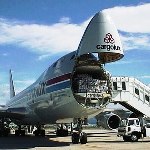
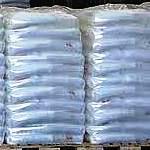
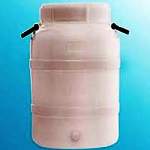
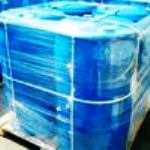
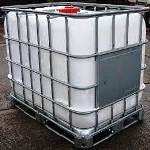
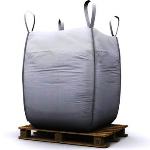
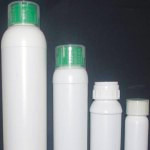
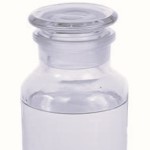
Triacetin CAS Number 102-76-1
For Properties Specifications Uses of Triacetin Click Properties, Specifications, Uses, Price, Process of Triacetin Manufacturer.
For For SDS MSDS Sheet of Triacetin Click SDS Safety Data Sheet MSDS Sheet of Triacetin Manufacturer.
The Properties, Specifications, Monograph and Uses of Triacetin:
Triacetin has fungistatic properties and has been used in the topical treatment of minor dermatophyte infections. It has a role as a plant metabolite, a solvent, a fuel additive, an adjuvant, a food additive carrier, a food emulsifier, a food humectant, and an antifungal drug. Triacetin is a flavoring agent, adjuvant, formulation aid, humectant, solvent, and vehicle. As a food additive it has an E number of E1518. One of its main uses is as a plasticizer in chewing gum.
Specifications of Triacetin USP Grade:
C9H14O6 --- 218.21
1,2,3-Propanetriol triacetate;
Glyceryl triacetate CAS 102-76-1.
DEFINITION
Triacetin contains NLT 97.0% and NMT 100.5% of C9H14O6 calculated on the anhydrous basis.
IDENTIFICATION
A. Infrared Absorption
B.
Sample solution: Dilute the solution prepared in the Assay to 10 mg/mL in 0.5 N alcoholic potassium hydroxide.
Acceptance criteria: The solution meets the requirements of Identification Tests—General, Acetate.
ASSAY
To pass the test.
Acceptance criteria: 97.0%–100.5% on the anhydrous basis
Specific Gravity: 1.152–1.158
Refractive Index: 1.429–1.430
Acidity:
Sample: 25 g.
Analysis: Dilute the Sample with 50 mL of neutralized alcohol, add 5 drops of phenolphthalein, and add 1.0 mL of 0.020 N sodium hydroxide.
Acceptance criteria: The pink color of the mixture persists for 15 s.
Water Determination: NMT 0.2%
Packaging and Storage: Preserve in tight containers.
Specifications of Triacetin BP Ph Eur Grade:
C9H14O6 --- 218.2 --- CAS 102-76-1
Action and use: Antifungal.
DEFINITION
Propane-1,2,3-triyl triacetate.
Content: 97.0 per cent to 100.5 per cent (anhydrous substance).
CHARACTERS
Appearance: Clear, colourless, slightly viscous oily liquid.
Solubility: Soluble in water, miscible with ethanol (96 per cent) and toluene.
Boiling point: about 260C.
IDENTIFICATION
Infrared absorption spectrophotometry.
Comparison Ph. Eur. reference spectrum of triacetin.
TESTS
Appearance: It is clear and not more intensely coloured than reference solution.
Acidity: Dissolve 5.00 g in 25 mL of anhydrous ethanol, previously neutralised to 0.2 mL of phenolphthalein solution and add 0.20 mL of 0.1 M sodium hydroxide. The pink colour of the mixture persists for 15 s.
Relative density: 1.159 to 1.164.
Refractive index: 1.429 to 1.432.
Water: Maximum 0.2 per cent, determined on 5.00 g.
Specifications of Triacetin FCC Food Grade:
Glyceryl Triacetate
C9H14O6 Formula weight 218.21
INS: 1518 CAS: 102-76-1
DESCRIPTION
Triacetin occurs as a colorless, somewhat oily liquid. It is soluble in 14 parts water, and is miscible with alcohol, with ether, and with chloroform. It distills between 258C and 270C.
Function: Humectant; solvent.
Identification:
A. Heat a few drops of sample in a test tube with about 500 mg of potassium bisulfate. Pungent vapors of acrolein evolve.
B. The solution resulting from the Assay testing gives positive tests for Acetate.
Assay: Not less than 98.5% of C9H14O6.
Acidity: Passes test.
Lead: Not more than 1 mg/kg.
Refractive Index: Between 1.429 and 1.431 at 25°.
Specific Gravity: Between 1.154 and 1.158.
Unsaturated Compounds: Passes test.
Water: Not more than 0.2%.
We also manufacture Triacetin EP Grade.
The MSDS-SDS Hazard Statement of Triacetin:
Triacetin or Glyceryl Triacetate or Glycerol Triacetate or Glycerin Triacetate
SDS Safety Data Sheet
MSDS Sheet, Material Safety Data Sheet 11-Feb-25
Section 1: Chemical Product and Company Identification
Product Name & Other Names: Triacetin or Glyceryl Triacetate or Glycerol Triacetate or Glycerin Triacetate.
CAS Number: 102-76-1
EINECS EC Code: 203-051-9
Relevant uses and uses advised against (if any): Industrial Manufacturing.
Suppliers: As per letterhead.
Section 2: Hazards Identification
GHS, Globally Harmonized System Classification in accordance with 29 CFR 1910
Hazard Class and Category Code(s), Regulation (EC) No 1272/2008 (CLP)
Not a hazardous substance or mixture according to Regulation (EC) No. 1272/2008.
This substance is not classified as dangerous according to Directive 67/548/EEC.
Labeling as per GHS and Regulation EC 1272/2008 (CLP) & GHS
GHS Label Elements NONE |
Signal Word: None
Precautionary statements:
P261: Avoid breathing dust/fume/gas/mist/vapors/spray.
P262: Do not get in eyes, on skin, or on clothing.
P281: Use personal protective equipment as required.
P302+P352: IF ON SKIN: Wash with plenty of soap and water.
P304+P340: IF INHALED: Remove victim to fresh air and keep at rest in a position comfortable for breathing.
P305+P351+P338: IF IN EYES: Rinse cautiously with water for several minutes. Remove contact lenses, if present and easy to do. Continue rinsing.
P337+313: If eye irritation persists get medical advice/attention.
Section 3: Composition and Information on Ingredients
Product Name & Other Names: Triacetin or Glyceryl Triacetate or Glycerol Triacetate or Glycerin Triacetate.
CAS Number: 102-76-1
EINECS EC Code: 203-051-9
Section 4: First Aid Measures
Always seek medical advice after the first aid treatment.
Skin: Rinse with water. Soap may be used. Seek Medical Aid.
Eyes: Wash eyes with plenty of water for at least 15 minutes, lifting lids occasionally. Seek Medical Aid.
Inhalation: Remove to fresh air. If not breathing, give artificial respiration. If breathing is difficult, give oxygen.
Ingestion: If swallowed, induce vomiting immediately after giving two glasses of water. Never give anything by mouth to an unconscious person.
Section 5: Fire and Explosion Data
Flammability of the Product: May be combustible at high temperature. May be ignited by heat, sparks, or flames. Container explosion may occur under fire conditions or when heated.
Products of Combustion: Oxides of Carbon and fumes.
Fire Fighting Media and Instructions: Use water spray, alcohol-resistant foam, dry chemical, or carbon dioxide. Wear self-contained breathing apparatus for firefighting if necessary. Avoid solid water jet as it can scatter the fire.
Special Information: In the event of a fire, wear full protective clothing and NIOSH-approved self-contained breathing apparatus with full face piece operated in the pressure demand or other positive pressure mode.
Section 6: Accidental Release Measures
Personal precautions, protective equipment, and emergency procedures: Avoid breathing dust/fumes/gas/mist/vapors/spray. Use individual protective equipment (waterproof boots, suitable protective clothing, safety glasses, etc.).
Environmental precautions: Do not let the product enter drains, soil, or water sources.
Methods and materials used for containment cleanup procedures and Storage:
Small Spill: Use appropriate tools to put the spilled solid in a convenient waste disposal container.
Large Spill: Contain spilled material. Do not inhale dust, mist, or gas. Avoid dust/mist formation. Use a shovel to put the material into a convenient waste disposal container.
Section 7: Handling and Storage
Precautions for safe handling: Apply according to good manufacturing and industrial hygiene practices. Ensure proper ventilation. Wash thoroughly after handling. Do not drink, eat, or smoke while handling. Avoid contact with skin, eyes, and clothing. Minimize dust generation. Avoid breathing dust/fumes/gas/mist/vapors/spray. Keep container tightly closed. Avoid ingestion and inhalation. Use individual protective equipment (waterproof boots, suitable protective clothing, safety glasses, etc.).
Conditions for safe storage, including any incompatibilities: Store in cool, dry, and ventilated area away from heat sources and protected from sunlight in tightly closed original container. Keep air contact to a minimum. Do not leave the material container open. Store protected from heat, sparks and ignition sources and incompatible materials. Avoid contact with skin and eyes. Avoid inhalation of dust/mist/vapor. Do not store with incompatible materials like oxidizing agents. Storage: Preserve in tight containers.
Section 8: Exposure Controls/Personal Protection
Engineering Controls: Use process enclosures, local exhaust ventilation, or other engineering controls to keep airborne levels below recommended exposure limits.
Ventilation System: A system of local and/or general exhaust is recommended to keep employee exposures as low as possible.
Personal Respirators (NIOSH Approved): For conditions of use where exposure to dust or mist is apparent and engineering controls are not feasible, a particulate respirator may be worn.
Skin Protection: Wear protective gloves and clean body-covering clothing.
Eye Protection: Use chemical safety goggles and/or full-face shield where dusting or splashing of solutions is possible. Maintain eye wash fountain and quick-drench facilities in work area.
Other Control Measures: Maintain good housekeeping in work area. Handle in accordance with good industrial hygiene and safety practice.
Section 9: Physical and Chemical Properties
Physical state and appearance: Colorless, viscous and odorless or (or slight fatty order) liquid.
Odor: Odorless or slight fatty order.
Odor threshold: No information found.
pH: 6.5 - 7.5 for 100 g/l in water @ 20C.
Relative density: 1.122-1.125 @ 20C.
Melting point: 3C literature.
Boiling Point: 259C literature.
Flash point: 151C literature.
Auto-ignition temperature: 433C.
Decomposition temperature: No information found.
Upper/lower flammability or explosive limits: No information found.
Vapor pressure: No information found.
Vapor density: No information found.
Evaporation rate: No information found.
Flammability (solid, gas): No information found.
Partition coefficient: n-octanol/water: No information found.
Solubility: Soluble in water. Miscible with benzene; very soluble in acetone.
Viscosity: No information found.
Section 10: Stability and Reactivity Data
Stability: It is stable in closed containers under recommended storage & handling.
Conditions of instability: Incompatible materials, Excess heat, light.
Incompatibility with various substances: Avoid high temperatures, sparks, open flames. Avoid contact with strong oxidizing agents.
Polymerization: Will not occur.
Hazardous decomposition products: Carbon dioxide and carbon monoxide and fumes formed under fire conditions.
Section 11: Toxicological Information
LD50 Oral – Rat: >2000 mg/kg.
Carcinogenic Effects: Not a reported carcinogen by IARC, NTP, ACGIH, OSHA.
Reproductive toxicity: No information found.
Mutagenic Effects: No information found.
Developmental Toxicity: No information found.
Section 12: Ecological Information
Products of Biodegradation: The product itself and its products of degradation are not toxic.
Toxicity to fish: semi-static test LC50 - Oryzias latipes - > 100 mg/l - 96 h.
Toxicity to daphnia and other aquatic invertebrates: static test EC50 - Daphnia magna (Water flea) - 380 mg/l - 48 h
Persistence and Degradability: Unlikely to persist due to water solubility.
Mobility: Likely to be mobile due to water solubility.
Bioaccumulation/ Accumulation: No information found.
Results of PBT and vPvB assessment: No information found for assessment.
Section 13: Disposal Considerations
Waste Disposal: Waste must be disposed of in accordance with federal, state, and local environmental control regulations.
Section 14: Transport Information
DOT USA, TDG Canada & ADR/RID Europe: Not controlled.
IMDG/IMO: Not controlled.
IATA/ICAO: Not controlled.
Section 15: Other Regulatory Information
USA Regulations:
SARA 311/312 Hazards: See section 2.
California Prop 65: Not listed.
Section 16 - Additional Information
DISCLAIMER: The information and recommendations set forth herein are presented in good faith and believed correct as of the date hereof. It is compiled from various sources, and it is not necessarily all inclusive nor fully adequate in every circumstance. In addition, these suggestions should not be confused with nor followed in violation of applicable laws, regulations, rules, or insurance requirements applicable. This MSDS sheet is intended only as a guide to the appropriate precautionary handling of the material by a professionally trained person using this product. Individuals receiving the information must exercise their independent judgment in determining its appropriateness for a particular purpose.

Triacetin Manufacturers, Suppliers, Exporters, Wholesalers:
King of Chemicals manufacturers

Plot No. 2900/46&47 + 2900/163to167, GIDC, Ankleshwar, Dist. Bharuch, India
India, USA, UAE
TEL: (Office) 91-22-23774610, 91-22-23723564
e-mail: info@kingofchemicals.com
Copyright and Usual Disclaimer is Applicable --- April 9, 2025
If I give you “My Word” Nobody can undo it.
If I sign an “Agreement” my Lawyer will undo it
Our products are for industrial and laboratory use only. The user must test the material before use. We are not dispensing chemists or druggist and do not offer over the counter type (OTC) products for medical use by individuals.
We and our associates manufacture pure chemicals surpassing Monograph Specifications of Analytical Reagent Standards, British & European Pharmacopoeia BP Ph Eur EP Standard, US Pharmacopoeia USP NF Standard, Indian Pharmacopoeia IP Standard, Japan Pharmacopoeia JP Standard, FCC Food Grade Standard. |
|